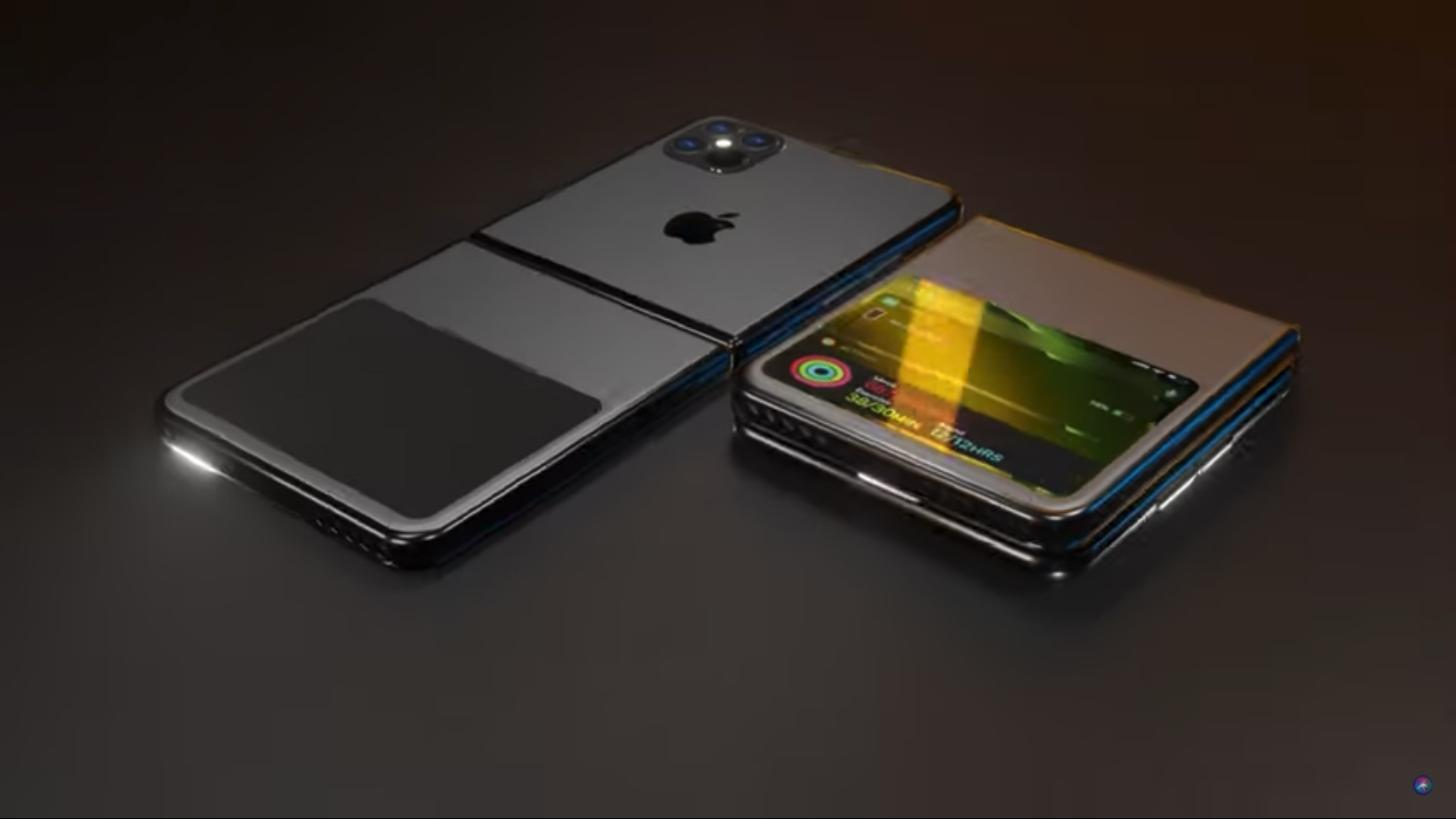iPhone 13 Flip leak just revealed Apple's secret weapon
iPhone 13 could be a foldable phone with a new kind of Ceramic Shield display

The iPhone Flip could use a new kind of flexible display that can protect the screen from all kinds of damage, building on the strength of the iPhone 12.
Discovered by Patently Apple, the documents were initially found back in April, but now the patent has been granted by the USPTO, giving Apple control over the concept. With this kind of secret weapon, we could easily see one of the iPhone 13 models being a foldable phone.
- iPhone Flip: Everything we know about Apple's foldable phone
- Forget iPhone 12: Galaxy Note 20 Ultra is $450 off right now
- Just in: OnePlus 8T Cyberpunk edition is arriving on time — unlike the game
Titled "Hybrid coverlay/window structure for flexible display applications", Apple's patent shows a four-layer screen, consisting of a cover layer, a hardcoat layer, an inner surface and a transparent support layer. The hardcoat layer seems to be the key, pre-filling in the existing micro-cracks in the surrounding layers, or acting as the outermost layer, being resistant to scratches and punctures.

For additional strength, the bottom transparent layer could also be made of glass or sapphire. Artificial sapphire is much harder than the usual toughened glass used on smartphones, which is why Apple uses it on the iPhone 12 series' rear camera lens covers to prevent scratches on the cover from ruining the phone's photos.

The crease in a folded device is always going to be its weakest point, due to the regular movement, plus the increased risk of intrusion from debris via the hinge mechanism. We've seen how badly this can go wrong on phones such as the original Samsung Galaxy Fold, so it's good to see Apple learning from the mistakes of its rivals.
Apple debuted a new anti-shatter glass called Ceramic Shield on the iPhone 12's display. This patent, like all other applications, is not guaranteed to become reality, but the fact that one of Apple's big new advancements this year was a new display material shows it obviously is focussing on related technology.
The patent refers to foldable displays, but also to curved and flexible ones, which means if Apple ever decides to give its iPhones curved edges or creates that flexible iPad we've been dreaming of, this tech could work for those products, too.
Get instant access to breaking news, the hottest reviews, great deals and helpful tips.
The iPhone 13 should launch next September, or perhaps later to make up for the delayed launch of the iPhone 12 this year in October/November. While we're not expecting the iPhone 13 itself to be flexible, we're still expecting the iPhone Flip to debut soon, perhaps during 2021 or 2022.

Richard is based in London, covering news, reviews and how-tos for phones, tablets, gaming, and whatever else people need advice on. Following on from his MA in Magazine Journalism at the University of Sheffield, he's also written for WIRED U.K., The Register and Creative Bloq. When not at work, he's likely thinking about how to brew the perfect cup of specialty coffee.
